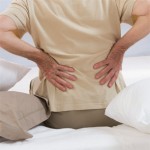I do believe that individuals who have had one episode of back pain are at risk for another. Many patients try to get back to their baseline level of activity too quickly. I recommend that they start back with exercise in a gradual program. Patients should start at one-tenth of the activity level and gradually increase exercise (walking, stationary bike) over time as postexercise soreness remains minimal. I encourage them to attempt to reach a reasonable body weight gradually over time. I limit the use of braces because they can result in diminished muscle tone in the lumbar spine muscles.
